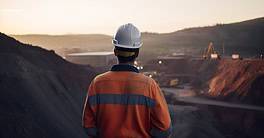Carbon emissions reduction is an increasingly important aspect of any global corporation’s operations. But working on reductions and investing wisely in offset projects is a critical element of that.
 |
Companies are increasingly looking to reach net-zero carbon emissions status in some or all parts of their business, as pressure builds from internal and external stakeholders to be environmentally responsible.
As carbon emissions reduction and offsetting become ever more important, understanding the voluntary emissions reduction market is critical. Unfortunately, the market lacks any kind of standards to ensure quality in project selection and execution. And some companies are taking advantage of the positive PR associated with emissions reduction without taking a close look at what they are investing in.
Sarah Brown at emissions management firm The CarbonNeutral Company explains the process: “We work with companies to analyze how much carbon is emitted—from travel, operations and so on.” She says that companies are often surprised by the areas where emissions are quite high—for example, energy use at the office and emissions incurred through business travel. “Then we work with them on how they can reduce that. For example, business travel can be reduced by greater use of video conferencing. Internal reductions can be managed quite effectively by using less electricity—turning lights off, shutting down computers and so on,” she explains.
For areas where it is not possible to reduce emissions, companies in the voluntary carbon offsetting market advise on ways to invest in verified emission reduction (VER) projects that are contributing to clean technology elsewhere.
One big problem with the voluntary carbon reduction market is the lack of standards. “There is a lack of rigorous research on the benefits that these projects are providing in terms of carbon reduction and on the social side of things,” says Leo Peskett, research officer in climate change at the Overseas Development Institute. “The question is whether offsets are the best way to do this and whether all offset projects should be lumped together.” When looking at any company in the VER industry, it is critical to ensure that both emissions analysis and project selection go through rigorous testing. With so many companies now operating in the voluntary market, the cheapest option is not always the best option.
“There are a lot of claims out there about a company having part of their operation carbon neutral,” says Larry Lohmann at the Association for Progressive Communications in the United Kingdom. “But one big question is, Who is verifying this and is there a system out there to verify that?”
Indeed, in July the ENDS Report—an environmental policy journal from UK group Environmental Data Services (ENDS)—noted that some companies directly investing in VER projects are double-using carbon credits. According to the report, “Companies are counting the credits they generate towards their own voluntary emissions reductions and then selling them, thereby enabling other organizations to claim the reductions as well.” Thus a critical element of any carbon offsetting and voluntary carbon reduction program is to choose a reputable partner and ensure good auditing of the entire process.
Part of the problem is that there is a range of options, all of which, for those outside the industry at least, are somewhat confusing. After going through a rigorous process to determine carbon output—generally with the help of outside specialists, new technology solutions geared at measuring output across a variety of measures, and auditors to confirm accuracy—a company will have a figure, or group of figures, that indicate total carbon usage for the business area.
At this point, should the company have already put in place reduction strategies, the company may then look at offsetting. There are a number of ways to do this, one of which is through direct investment into renewable energy projects, which companies must first have audited to determine real reduction amounts. By working with a company already existent in the VER market, companies can choose to invest in projects that the company has already identified as meeting their standards for a VER project.
Those projects go through an auditing process to determine what impact on emissions reduction they have, and they are assigned carbon offset credits based on that. Thus the company buys VER “credits,” measured as one ton of carbon emissions offset per one ton of carbon emission reduction value given to the green project. Companies can generally choose from a range of projects based on their values and goals with offsetting. Some customer-facing companies choose to offer clients the opportunity to buy offset credits—and choose what project those credits should go towards. Others will buy offsets themselves and choose the projects.
The big issue with this market is that companies operating in the voluntary space are not subject to any standards for project selection, auditing of real emission reduction, or amount of the cost of a credit that actually goes into the project—versus the coffers of the VER company itself. It is up to the customer to ensure the carbon offset is genuine and effective.
International insurer FP Marine Risks has put in place a carbon neutral program for business flights through The CarbonNeutral Co. According to Philip Bilney, group executive director of FP Marine Risks, auditing is an important issue for them. “Carbon footprint assessments are audited by accountants KPMG, and the offset projects chosen are in accordance with the CarbonNeutral Protocol, which assures their quality,” he says.
 |
|
Bilney: Audits carbon offset measures to ensure they are effective. |
Some market watchers say that while standards are important, it would be a bad thing for the voluntary market to be over-regulated. “There is pressure from one side to put more regulation in it,” says Lohmann, “but both sides in this debate are operating under the illusion that it can be regulated to come up with something in a price range corporates are interested in but also that it is a real commodity.”
The certified emission reduction (CER) market—CERs are regulated credits for the mandatory reduction market—is plagued by multiple layers of bureaucracy that make getting a project accepted for CER status difficult at best. And the prices for purchasing credits in the CER market are high multiples of what they are for voluntary credits. In addition, there is still strong opposition to the entire idea of offsetting from those who believe it does not get at the root of the problem but merely gives companies an excuse to continue with practices that need to fundamentally change.
“Offsets are actually a way of delaying the rather extensive investment that has to go immediately into stopping that flow of fossil fuels,” says Lohmann. “The whole offset market has to be abandoned as a bad job. It is not going to work. Given that it is not going to work, the longer we spend on it and the more resources poured into it, the more genuine action on emissions reduction will be delayed.”
But advocates of offsetting point out that it is an important first step and provides support for projects that might not otherwise get done. Lawrence Hunt, CEO at airline Silverjet, says, “Offsetting is not the long-term answer, but it is a practical step we can take right now.”
CASE STUDY: SILVERJET
British business-class airline Silverjet has set a high standard for others in the aviation industry to emulate. The group has been offsetting carbon emissions from all flights since its launch in January this year. CEO Lawrence Hunt says this is an issue that the aviation industry has been slow to pick up. “If we wait for politicians to do anything, it will be too late,” he says. “Certainly the aviation business has been on the back foot on this issue—not being proactive in deciding how to clean up the pollution they create.”
In preparing to offset, Silverjet had the Edinburgh Centre for Carbon Management, part of Edinburgh University, assess engines and ground activity to determine exactly how much carbon and other emissions they produced. “We found that the average flight produces 124 tons of carbon,” Hunt says.
To manage the cost of offsets, the company builds a mandatory carbon offset contribution into flight prices. Passengers are then given carbon points, which they can invest in offset projects around the world. “It costs on average £17 per passenger to offset their flights. It is not a huge cost to people, but it means the airline can reduce its emissions footprint per flight to zero.”
Through offsets, the company invests in a range of projects, notes Hunt. “The important thing for us was ensuring the authenticity of the projects, costs and so on. We wanted to make sure as much of our offset goes into the project as possible, rather than getting creamed off the top by the company arranging the project.” The company uses The CarbonNeutral Co. to handle offset investments.
Silverjet was awarded the UK Institute of Transport Management’s Environmentally Aware Airline 2007 award in recognition of its carbon offsetting program.
CASE STUDY: HSBC
In 2004 HSBC made a decision that would change the way the bank does business. “We decided that climate change was a compelling issue and that our clients, staff and the countries in which we operate would need to understand the risks associated with climate change and how to respond to them,” explains Jon Williams, head of Group Sustainable Development, HSBC Holdings.
The bank set a goal to become completely carbon neutral across the organization but also wanted to take advantage of the process to create business benefits for the bank and its clients. “We set a goal for our worldwide operations to contribute zero net carbon dioxide into the atmosphere, and in October 2005 we became the first major bank—and FTSE 100 company—to become carbon neutral,” says Williams. “Very importantly, through the process of learning how to make our own operations carbon neutral, we have learned how to support our clients to do the same.”
HSBC’s carbon management plan consisted of three key steps: energy reduction initiatives, buying green electricity, and carbon offsetting. “We wanted to ensure that we were making real reductions in our carbon emissions by generally being more efficient, which we felt was beneficial from a P&L; perspective,” says Williams. “As part of our strategy, we purchase green electricity in eight countries worldwide. In the United States we are now one of the largest buyers of renewable energy,” he says. “In markets where the technologies are commercially and technically viable, we invest in the creation of renewable energy infrastructure.”
One of the big challenges for HSBC, as with most multinational firms, is to continue to keep carbon neutral status while growing the business. To counter this, the group purchases verified emission reductions (VERs) that sufficiently offset CO2 emissions.
CASE STUDY: FP MARINE RISKS
Marine insurance broker, FP Marine Risks, is an international company where client meetings, and thus business travel, are a critical part of operations. Philip Bilney, group executive director, says the company decided to offset the carbon emitted as a result of business flight travel and brought in The CarbonNeutral Co. to help. “FP Marine Risks is now a recognized carbon neutral flights company,” he says. “At the same time, we have begun research into how we can reduce emissions across the rest of the company’s activities and look forward to putting a comprehensive corporate environmental strategy forward in the near future.”
Taking a local approach was also important. “We wanted the offset project to yield benefits locally,” Bilney says. “We continue to witness rapid economic growth in Asia, but it has come at an environmental price.” The company has three offices in Asia-Pacific. “The total offset amount is being invested in a wind power project in the Indian states of Karnataka and Rajasthan designed to provide electricity from a renewable source for 30,000 homes and help to lower India’s dependency on coal-generated power,” he says. “We chose the Indian wind power project for two reasons,” he explains. “Firstly to see the benefits locally—we have three offices in the Asia-Pacific region—and secondly because renewable energy projects are able to generate the quickest and most beneficial carbon offset results.”
The project is expensive, but the goodwill it creates for internal stakeholders and the reputational boost make it a worthwhile investment. In addition, Bilney does expect to see some economic benefit down the road. “When we move ahead with the broader corporate environmental strategy, we will be keen to lower our carbon emissions. We would then expect this to lead to a reduction in our energy bills,” he says.
Denise Bedell



